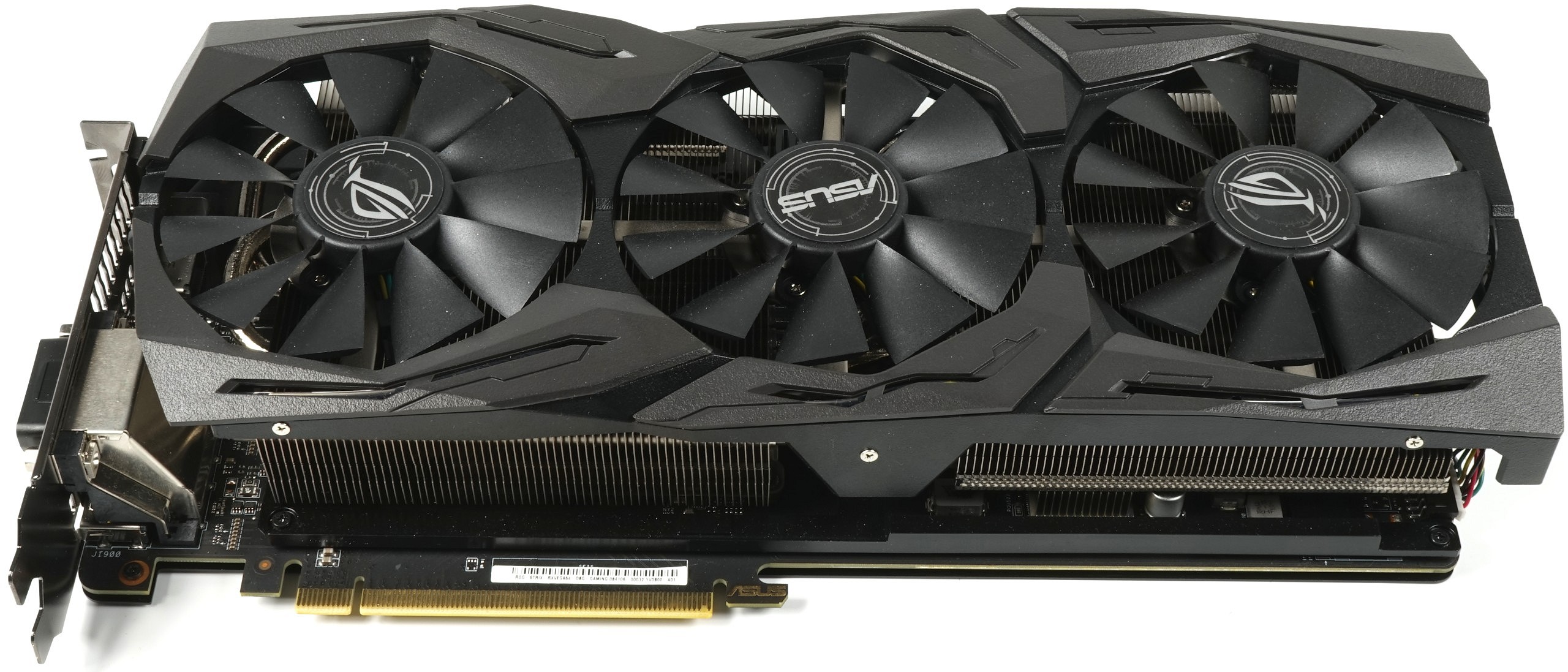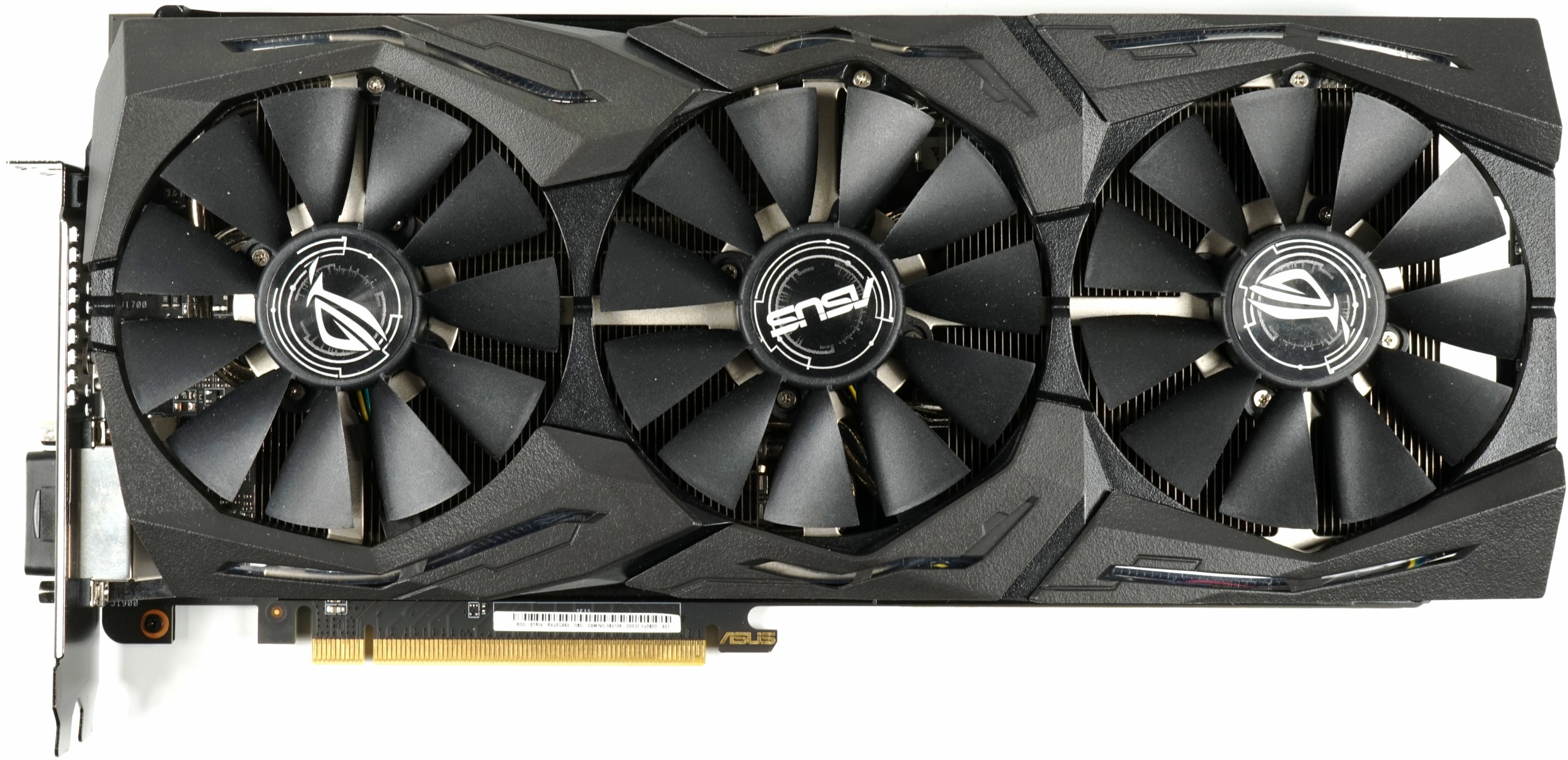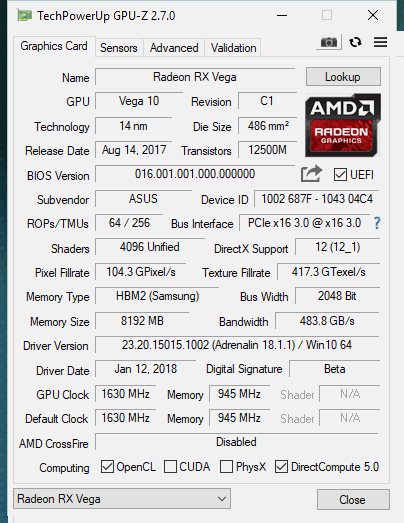Tom's Hardware Verdict
Asus did a great job designing a sharp-looking Radeon RX Vega 64 card that performs better than AMD's reference implementation. We would have liked to see the company put a thermal pad between its PCB and backplate, though, to counter high board temperatures under load, along with using slightly higher fan speeds. Regardless, the prices of all Radeon RX Vega 64 models remain a little too high for a recommendation at this time.
Pros
- +
Excellent 1440p performance
- +
Good build quality
- +
Aesthetically pleasing design
Cons
- -
Price is still too high
- -
Temperatures rise in closed cases
- -
Fan speed should be a little higher
- -
Missing a thermal pad between PCB and backplate
Why you can trust Tom's Hardware
Features & Specifications
AMD's Radeon RX Vega 64 is as fast or faster than a GeForce GTX 1080 in our gaming benchmarks. That much is well-established fact. But up until recently, the flagship Vega card was priced well beyond Nvidia's alternative, making it easy for us to recommend the GeForce instead. Now that Vega 64 is becoming more affordable, though, it's getting harder to choose between the two high-end options.
The Asus ROG Strix Radeon RX Vega 64 8GB OC Edition we're reviewing today does cost $70 more than the least expensive Vega 64 model (and $100 more than the cheapest GTX 1080). However, it does add RGB lighting, a big heat sink, quiet fans, a second HDMI port for VR headsets, and high-quality components. In the end, those extras aren't enough to justify such a big mark-up, particularly when the Radeon desperately needs a price break to secure a competitive advantage.
Specifications
| GPU (Code-name) | Vega 10 |
| Shader Units | 4096 |
| Base & Boost Clocks | 1630 MHz |
| Memory Size & Type | 8GB HBM2 |
| Memory Clock | 1.89 Gb/s |
| Memory Bandwidth | 484 GB/s |
| Fans | (3) 90mm |
| Ports | (2) HDMI 2.0, (2) DisplayPort 1.4, (1) DL-DVI |
| Power Connectors | (2) 8-pin PCIe |
| Dimensions (LxHxD) | 30.2 x 12.7 x 4.5cm |
| Weight | 1286g |
| Warranty | 3 Years |
Unboxing, Look, & Feel
Weighing in at 1286 grams, this card lands between Gigabyte's much lighter Radeon RX Vega 64 Gaming OC 8G and the aforementioned behemoth from Sapphire. Asus goes big on the physical dimensions, too. Its ROG Strix Radeon RX Vega 64 8GB OC Edition measures 30.2cm long, 12.7cm tall, and 4.5cm deep.
Three 90mm fans are mounted in 92mm openings. With their special shape, a total of 11 rotor blades per fan provide airflow and turbulence, rather than just static pressure. This should prove beneficial to Asus' thermal performance.
The backplate is embossed with an illuminated ROG logo. That plate doesn't help with cooling at all; it's primarily meant to look good and give the card some rigidity.
Plan for an extra 5mm of clearance (at least) behind the ROG Strix Radeon RX Vega 64 8GB OC Edition. This may cause problems on some motherboards, particularly if the heat sink/backplate intrude on an occupied expansion slot or large CPU cooler.
As we can see from the bottom, Asus employs vertically-oriented fins. At the expense of occupying a third slot with its 2.5-slot design, the company does open up more room for airflow.
Get Tom's Hardware's best news and in-depth reviews, straight to your inbox.
The dark plastic shroud covers part of the top, creating room for a back-lit ROG logo. Toward the back, you'll find a pair of eight-pin power connectors that are rotated by 180 degrees and recessed a bit, sitting flush with the PCB.
In addition to five 6mm heat pipes, the board's closed end reveals two PWM-controlled fan connectors able to accommodate optional case fans, an RGB output, and LED headers.
The rear bracket plays host to five display outputs. A pair of HDMI 2.0 interfaces is ideal for anyone with a VR HMD, while two DisplayPort 1.4 connectors make multi-monitor configurations easy. Dual-link DVI ports aren't as pervasive as they once were, but Asus still gives you one. Since the card's cooling fins face up and down, we're not particularly worried about those five outputs interfering with airflow.
Although Asus' official documentation claims a 1590 MHz boost clock, GPU-Z reports 1630 MHz. That specification is mostly wishful thinking though, given a 295W power limit.
In comparison to the relevant reference cards the data looks as follows:
| Model | Radeon RX Vega 64 | Asus ROG Strix Radeon RX Vega 64 | Radeon RX Vega 56 | GeForce GTX 1070 Ti | GeForce GTX 1080 |
| GPU | Vega 10 | Vega 10 | Vega 10 | GP104 | GP104 |
| Die Size | 486 mm² | 486 mm² | 486 mm² | 314 mm² | 314 mm² |
| Transistors | 12.5 billion | 12.5 billion | 12.5 billion | 7.2 billion | 7.2 billion |
| Base/Boost Clock Rate | 1274/1546 MHz | 1274/1630 MHz | 1156/1471 MHz | 1607/1683 MHz | 1607/1733 MHz |
| Shaders/SIMDs | 4096/64 | 4096/64 | 3584/56 | 2432/19 | 2560/20 |
| Texture Units/ROPS | 256/64 | 256/64 | 224/64 | 152/64 | 160/64 |
| Pixel Fill Rate | 99 GPix/s | 104 GPix/s | 94 GPix/s | 108 GPix/s | 114 GPix/s |
| Texture Fill Rate | 396 GT/s | 417 GT/s | 330 GT/s | 244 GT/s | 257.1 GT/s |
| Memory Interface | 2048-bit | 2048-bit | 2048-bit | 256-bit | 256-bit |
| Memory Type | HBM2 | HBM2 | HBM2 | GDDR5 | GDDR5X |
| Memory Bandwidth | 484 GB/s | 484 GB/s | 410 GB/s | 256 GB/s | 320 GB/s |
| Memory Speed | 1.89 Gb/s | 1.89 Gb/s | 1.6 Gb/s | 8 Gb/s | 10 Gb/s |
| Memory Size | 8GB | 8GB | 8GB | 8GB | 8GB |
| DX12 Feature Level | 12_1 | 12_1 | 12_1 | 12_1 | 12_1 |
| PCIe Power Connectors | 2x 8-Pin | 2x 8-Pin | 2x 8-Pin | 1x 8-pin | 1x 8-pin |
| TDP | 295W | 295W | 210W | 180W | 180W |
Test System & Measurement Methods
We introduced our new test system and methodology in How We Test Graphics Cards. If you'd like more detail about our general approach, check that piece out. We've upgraded the CPU and the cooling system since then to make sure that nothing's holding back graphics cards as fast as this one.
The hardware used in our lab includes:
| Test System | |
| Hardware | Intel Core i7-6900K @ 4.3 GHzMSI X99S XPower Gaming TitaniumCorsair Vengeance DDR4-32001x 1TB Toshiba OCZ RD400 (M.2, System SSD)2x 960GB Toshiba OCZ TR150 (Storage, Images)be quiet Dark Power Pro 11, 850W PSUWindows 10 Pro (All Updates) |
| Cooling | Alphacool Eisblock XPX5x be quiet! Silent Wings 3 PWM (Closed Case Simulation)Thermal Grizzly Kryonaut (Used when Switching Coolers) |
| Case | Lian Li PC-T70 with Extension Kit and ModsConfigurations: Open Benchtable, Closed Case |
| Monitor | Eizo EV3237-BK |
| Power Consumption Measurement | Contact-free DC Measurement at PCIe Slot (Using a Riser Card)Contact-free DC Measurement at External Auxiliary Power Supply CableDirect Voltage Measurement at Power Supply2 x Rohde & Schwarz HMO 3054, 500 MHz Digital Multi-Channel Oscilloscope with Storage Function4 x Rohde & Schwarz HZO50 Current Probe (1mA - 30A, 100 kHz, DC)4 x Rohde & Schwarz HZ355 (10:1 Probes, 500 MHz) 1 x Rohde & Schwarz HMC 8012 Digital Multimeter with Storage Function |
| Thermal Measurement | 1 x Optris PI640 80 Hz Infrared Camera + PI Connect Real-Time Infrared Monitoring and Recording |
| Noise Measurement | NTI Audio M2211 (with Calibration File, Low Cut at 50Hz) Steinberg UR12 (with Phantom Power for Microphones) Creative X7, Smaart v.7 Custom-Made Proprietary Measurement Chamber, 3.5 x 1.8 x 2.2m (L x D x H) Perpendicular to Center of Noise Source(s), Measurement Distance of 50cm Noise Level in dB(A) (Slow), Real-time Frequency Analyzer (RTA) Graphical Frequency Spectrum of Noise |
MORE: Best Graphics Cards
MORE: Desktop GPU Performance Hierarchy Table
MORE: All Graphics Content

Igor Wallossek wrote a wide variety of hardware articles for Tom's Hardware, with a strong focus on technical analysis and in-depth reviews. His contributions have spanned a broad spectrum of PC components, including GPUs, CPUs, workstations, and PC builds. His insightful articles provide readers with detailed knowledge to make informed decisions in the ever-evolving tech landscape








